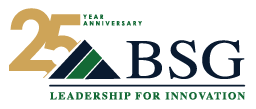Culture fit takes priority in finding the right executive for a family-owned company’s next phase
.png?width=712&name=My%20Post%20(4).png)
90% of American businesses are either family-owned or controlled[1]. So, as executives age and the business’ needs change, it’s necessary to think about the future. How can a family-owned company maintain its legacy and simultaneously push its business into a new era?
John A. Davis, who leads the Family Enterprise Programs at MIT’s Sloan School of Management, conducted a multi-year study of multigenerational family wealth, and found three paths that family wealth can take over time, described below[2]. Because most families with moderate to significant wealth hold most of their assets in the form of an operating company that they own and control, the success of the business largely accounts for the financial success of the family.
- The Three-generation Path – 66% of family-owned businesses end up on this path. The first generation creates wealth, the second generation maintains it, and the third loses it. Over time, the family and its business become susceptible to bad investment choices, over-consumption of owned assets, and a lack of revitalizing their business.
- The Quick Descent Path – 20% of family-owned businesses end up here. The outcome is essentially the same as the Three-generation path; the loss of wealth just happens faster. This is caused by family fractures or legal battles that divide assets, and poor or risky investments that the family does not exit soon enough.
- The Regeneration Path – 15% of businesses remain successful over time, in part by pivoting to a new focus or reinventing their business to achieve even greater growth & resulting wealth.
As family-owned companies age, they face a combination of common hurdles:
- business problems ranging from industry changes, to missed opportunities, or mismanagement
- family-specific issues including internal family conflict, loss of family interest, and a growing aversion to risk taking.
But it’s clear that companies must overcome these obstacles to avoid the two negative outcomes above (Three-generation or Quick Descent paths). To do this, companies may need to bring in one or more outside experts to help catalyze change, spur growth, improve quality, costs and/or increase profit.
Why family businesses should consider an outside executive
To set the business on a successful regeneration path, families have the option of recruiting an outside executive to lead the most important aspects of the business. This decision may come about for a few key reasons:
- The current ownership has reached retirement age, and there’s no succession plan in place or no internal talent to pass the reins to.
- Current ownership wants to bring in private equity, and an outside executive could signal to investors that the company is serious about operational rigor. Ted Clark, the Executive Director of the Northeastern University Center for Family Business, says, “That’s what equity investors want to see; that the business isn’t entirely dependent on family members.”
- The company has scaled beyond the capabilities of its current leadership.
- An outside executive can also be a neutral voice of reason when family conflict threatens the business’ progress[3].
When beginning the process of recruiting an outside leader, privately owned and equity-backed family businesses could run into different hurdles. With the former, there could be significant resistance internally. Clark says, “If it’s tightly held, the owners are often reluctant to share information with non-owners or non-family.” Also, family-owned companies may not have access to their industry’s top talent, which means relying heavily on a hiring firm that’s not as familiar with the company’s culture and operations.
Equity-backed businesses will have more access to potential executives, but the ultimate decision requires input from investors as well as family. In this case, the family has to remember to put the business first and consider the needs of its stakeholders. This could result in choosing a leader that may not be the family’s first choice.
How to pick the right executive
Once a family-owned business has opted to replace or augment the existing leadership team with outside leadership, it’s crucial to find a leader who’s a good fit. There may be general characteristics that define a great leader (e.g. willingness to take risks, strong business acumen, etc.), but moving into a family business requires a more nuanced skill set.
- The right executive needs relevant business qualifications and strong emotional intelligence. He or she isn’t just running a business; they’re taking part in a paradigm shift, and that requires a high level of awareness and sensitivity.
- This executive must be transparent with company information. Clark says this information includes both business data and the strategic direction of the business. Sharing this information helps smooth the transition to outside leadership. About the new leaders, he says, “They may be C-suite, but they’re hired guns until they’re viewed as equal partners.”
- The outside executive must be willing to create a partnership and understand what’s at stake.
Family businesses also need a leader who’s self-disciplined and knows which battles are worth fighting. This executive must be flexible and show a willingness to juggle priorities as needed, and he or she has to foster a collaborative environment[4].
Clark points to New England Coffee as a prime example of family businesses “understanding how outside employees are valuable”. The family-owned coffee company recruited Uno Foods SVP Chuck Kozubal in 2011. As President and COO, Kozubal oversaw the company’s sale to Riley Foods Company. He left once the deal was closed and Jim Kaloyanides became the fourth, and last, generation of Kaloyanides to run the company.
During the search for an outside executive, Jim Kaloyanides says the family knew it was of high importance for a leader to work well within a family environment. “The qualities that were at the top of the list were the ability to communicate and having a comfort level working with owners with diverging opinions about where the business should be, sacred cows and things of that nature,” he says.
New England Coffee’s approach to outside leadership steered the company forward, maintaining a legacy that has endured since 1916. A huge part of their success required a focus on an abstract metric – culture.
Kaloyanides affirms that culture plays a huge role in making this decision. He says, “In a family business, you do need to have that personality where you understand you’re in charge, but ultimately the family is what you need to manage, being able to work with them and understanding their sensitivities and desires.”
The culture fit assessment
When it comes to choosing the right executive, BSG has found that two assessments in particular are critical to optimizing for a successful outside hire:
- Assessing the overall culture into which this new executive will be placed (we at BSG call it “climate-testing”) This is a culture fit assessment that can be especially valuable to family-led business clients. This assessment provides additional assurance that a leader is the right fit for the company. Very few outside hires will result in success 100% of the time, but anecdotal evidence suggests the search industry’s average is around 50%. Anything a business can do to move the bar of success closer to 75-80% is worthwhile, especially within a family-run business where executives face more potential pitfalls.
- Assessing the chemistry fit between the new hired executive and the family member to whom this person will primarily report and by whom this new executive will be managed (we call it “soil-matching”). This is different than climate testing which is “one-to-many”; soil-matching is a “one-to-one” assessment to determine compatibility of work styles, personality, and challenges that may surface when either executive is operating under pressure or put to the test with a challenging business hurdle or headwind.
Final Thoughts
Outside leadership is often a necessary step for a family business that wants to survive. With the right mindset and an understanding of how new leadership will fit into the existing culture, companies can find their next great leader. Outside executives can do more than offer a fresh perspective – they can position a family brand for continued longevity.
NOTES: For more on BSG’s Culture Assessment tool as well as other key assessment and performance optimization tools, please see https://www.bostonsearchgroup.com/talent-toolbox
[1] Inc. (2019). Family-Owned Businesses. Retrieved from: https://www.inc.com/encyclopedia/family-owned-businesses.html
[2] Cambridge Institute for Family Enterprise Study on Multigenerational Family Wealth (2014), as described in Enduring Advantage, 2nd Edition by John A. Davis. https://johndavis.com/enduring-advantage-collected-essays-family-enterprise/
[3] The Young Entrepreneur Council. (December 28, 2018). Small Business Trends. Retrieved from: https://smallbiztrends.com/2016/01/leadership-in-family-owned-business.html
[4] Ballini, Beatrice, et al. (September 22, 2017). Leading a Legacy: How Outsiders Can Thrive as Family Business CEOs. Retrieved from: https://www.russellreynolds.com/insights/thought-leadership/leading-a-legacy-how-outsiders-can-thrive-as-family-business-ceos




